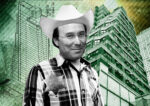Score one for the landlord next door.
A bill to make it easier for developers to gain access to an adjacent property has failed after stalling in the state Assembly.
Before beginning construction in New York, a developer must install vibration monitors in neighboring buildings. The tools, similar to seismographs, check for overly disruptive work.
But for the monitors to be installed, and thus for construction to proceed, a developer must hope for friendly neighbors. If a landlord refuses access, the project can be stopped.
This proposed legislation would have given developers more legal firepower in such situations.
It aimed to “expedite construction of affordable housing and other projects by streamlining legal proceedings for access, which currently can take months or even years,” said Jenifer Rajkumar, the state Assembly member who sponsored the bill.
“My bill has widespread support,” she said, “but did not go to a floor vote this session.” Supporters include the Adams administration, Real Estate Board of New York, the New York State Association For Affordable Housing, the New York Building Congress and others.
“These are stakeholders who know firsthand the difficulties in accessing adjoining lots for construction,” said Rajkumar.
An identical bill passed the state Senate, but Assembly leaders did not move the lower house’s version of the bill to the floor in the final days of this year’s legislative session.
While most negotiations for building access are resolved amicably, plenty are not, and the state’s court system is strewn with such landlord-developer battles.
In one recent case, Gary Barnett’s Extell Development asked that sheriffs accompany its employees to a Diamond District building that stood to have several floors of windows bricked over because of Extell’s neighboring hotel project.
Critics of the bill said it would have weakened landlords’ rights by wrongly broadening what counts as a “refusal” to grant access; the definition included a failure to respond to a developer’s entreaty. Should a developer rush or poorly assemble an access proposal, the bill could leave landlords holding the bag, critics suggest.
Real estate attorney Ray Mellon objected to the bill’s inclusion of underpinning — in which a neighboring building’s foundation is put on stilts so a deeper foundation can be dug next to it — as a specific action for which developers can seek judicial remedy. He said they should pay for that privilege.
Protections that developers may install over a neighboring roof can be later removed, but “underpinning affects the integrity of the building forever,” Mellon said. “Developers who are benefiting financially from these projects already budget to pay neighbors.”
For developers, spending time negotiating an access agreement, in which the developer pays the landlord to enter and fortify the property, adds costs. Cutting a check is preferable to launching a lawsuit, a last resort if the owner proves obstinate.
When owners refuse access — usually by dragging their feet, demanding a high fee or insisting on excessive safeguards for their building — developers can seek a judicial order allowing them temporary access.
While the costs and drudgery of litigation ideally motivate both sides to negotiate, some landlords use the threat of litigation as leverage.
Developers were given a judicial remedy to intractable access disputes by the Real Property Actions and Proceedings Law of 1968, passed by the state legislature in the same decade that New York City codified its current zoning code. The failed legislation, which is likely to be reintroduced next year, would amend Section 881 of the law.
Limiting access affects all New Yorkers, not only developers, proponents of the bill say.
On Tuesday, Department of Buildings Commissioner James Oddo explained that the city’s green sidewalk sheds often stay up beyond the time permitted, marring the streetscape, because of delays over access to neighboring properties.
Read more



